Screw Retained Restoration
The screw-retained restoration procedure allows for simple and easy retrieval, and upholding of abutments during routine checkups, with minimal risk of damage to the existing restoration. These advantages have made the choice of screw-retained restorations especially attractive to dentists and patients alike, facilitating patient comfort and saving chair-time for the dentist.
MIS offers a wide variety of abutments for screw- retained restorations, available for all MIS implant platforms (Narrow, Standard, Wide). The range of superstructures allows for diverse restoration options with an emphasis on convenience and simplicity.
CONNECT System
For conical connection implants
The MIS CONNECT is a stay-in abutment system which enables avoiding interference of the peri-implant gingival seal.It offers doctors the ability to maximize the tissue-level restoration concept, enabling the entire prosthetic procedure and restoration to occur far from the bone, and at any level of the connective tissue.
Multi-Unit System
MIS Solid Multi-Unit screw-retained abutments provide a superior, yet simple prosthetic solution for screw-retained, full and partial prosthetic appliances in almost every clinical scenario. These low profile connections come in different insertion angles and in varying gingival heights for surgical efficiency and exceptional aesthetic results.
MIS MULTIFIX - Fixed Restoration for Atrophic Ridges
MIS MULTIFIX allows for a comprehensive treatment plan for edentulous patients, of full-arch immediate restoration, using Multi-Unit abutments on just four implants.
Benefits
- Simple retrieval
- Minimal risk of damage
- Patient comfort
Technical Information
- Concave emergence profile.
- Color-coding.
- Internal-hex. and conical connections.
